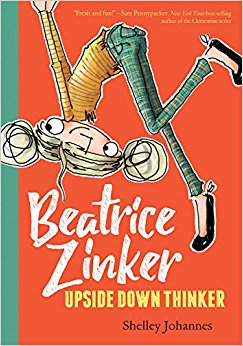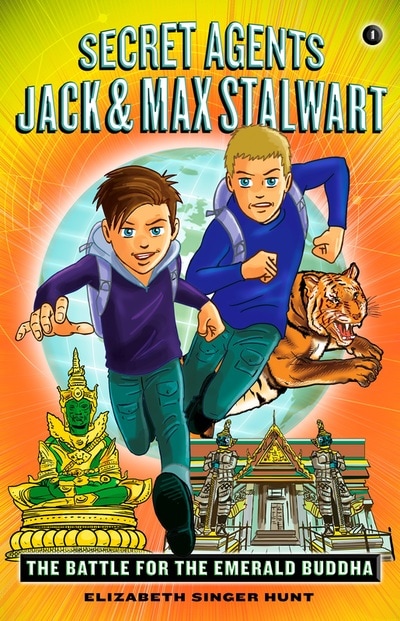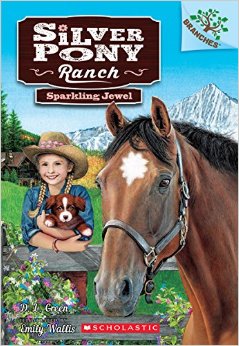Beatrice Zinker, Upside Down Thinker
By Shelley Johannes
Published by: Disney-Hyperion (September 19, 2017)
Available in: Hardcover, Kindle, Nook
At the time of this review, this was a standalone book, but a series is planned.
“Look out, world… Beatrice is on the loose!”
Beatrice Zinker, Upside Down Thinker shows the upside of original thinking. This tumultuous, topsy-turvy chapter book heralds the arrival of an inventive, joyous new girl-centric series that so far is an upright delight. Book one in the series is new this fall.
The prose is poetic in both rhythm and, sometimes, rhyme, which lends a slight feeling of picture book as the story begins. As the text morphs into longer paragraphs and more complex subplots, the picture-book feeling fades, but not to the detriment of pacing. The characters evolve with subtle complexity, humor, and pathos. The story is a Ferris wheel ride: first jolting fun, then a larger world view, which turns into a stomach-dropping descent into the unknown, followed by a soft landing back at the beginning… only now tempered with a more layered, rich experience.
Halloween gets a quick spotlight in the beginning of the story, so this is a good choice for October reading.
This is the debut book for author Johannes, and kudos to her bold work. Within the confines of the chapter book format and basically one day at school, Beatrice experiences numerous important concepts. There’s friend trouble, girl-centric drama, sadness and surprise at relationship evolution, disappointment, and thrilling excitement. Where Beatrice shines is how she reacts to these challenges. She’s a girl who exhibits compromise, gumption, solid priorities, creative solutions, the foresight to fake it until she makes it, and the best pick-yourself-up-by-the-sock-puppet scene in the chapter book world.
When Beatrice’s older sister, Kate, tells her that their mother is sure to not let Beatrice wear her ninja suit to school because she looks like a criminal, Beatrice says, “No, I don’t… I look like me.” Just watch as young Beatrice uses stealth and cunning to steal her way into young readers’ hearts.
What do you say teachers, parents and writers? Use the comment below and let’s chat….




